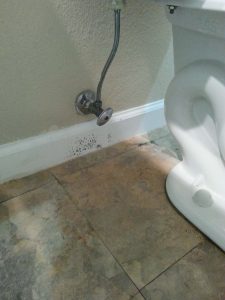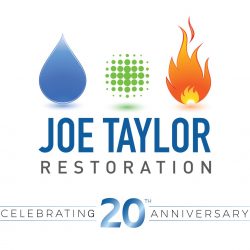Tenant Water Damage- St. Augustine, Florida
Date
Friday, May 10, 2019
Date
Friday, May 10, 2019
 It’s bad enough when a property owner experiences a water loss in the home or business in which they reside. But what can be even worse is tenant water damage in a house, condo, commercial space, etc. that the landlord rents out and does not occupy. Why potentially worse? For reasons such as the tenant may not know what to do when water begins to escape its normal boundaries, or may try to handle things themselves without even notifying the landlord. So much so that what started as relatively simple tenant water damage can quickly turn into a major problem.
It’s bad enough when a property owner experiences a water loss in the home or business in which they reside. But what can be even worse is tenant water damage in a house, condo, commercial space, etc. that the landlord rents out and does not occupy. Why potentially worse? For reasons such as the tenant may not know what to do when water begins to escape its normal boundaries, or may try to handle things themselves without even notifying the landlord. So much so that what started as relatively simple tenant water damage can quickly turn into a major problem.
That’s what happened recently for a landlord in St. Augustine, Florida. A leaking toilet in the second floor guest bathroom turned into a small flood that spread to the kitchen. And instead of notifying the landlord immediately, the tenant tried to clean things up herself to the best of her ability. As a result, by the time the landlord found out about the tenant water damage, and contacted Joe Taylor Restoration, there was already mold growing in the sub-floor of the bathroom.
Thankfully, because the technicians at Joe Taylor Restoration are experts at both water restoration and mold removal, the home was restored to its pre-loss condition in a rather short period of time.
But what can a landlord do to prepare for this kind of situation? Our advice is to become educated on what to do in a water emergency before it happens.
- When you have water flooding your rental property via a leak, blocked drain or other method, the first step is to turn off the main water valve. This action stops water from entering the property, thereby eliminating even more water damage. Note that many fixtures have cut-off valves that you can go to first.
- Then, open a functioning faucet in the property, like a first floor bathroom sink, to drain all the water out of the plumbing system. This should stop water from leaking out through the broken, pipe, fixture or appliance.
- Now that the water is stopped and drained, schedule a plumber to come as soon as possible to repair the issue. Make sure you give a complete and accurate description of the problem and what you’ve done about it so far.
- Also contact a licensed and insured restoration company, like Joe Taylor Restoration, to address the tenant water damage immediately, ensuring that the water damage does not progress to mold damage.
- Work with the tenant on whether the property is habitable for the short-term or long-term.
Note:
- If you are unsure where to locate the previously mentioned valves, etc., consider hiring a plumber for an hour to meet you at the property and show you all the key shutoff valves and other pertinent information. It will be a small investment that will be well worth it in the long run.
- We suggest that you communicate the above process to your tenant before a water emergency occurs. You may even want to show them where the main shut off valve is in the event that they are present at the time of the water loss and can address the problem more immediately.
If you can educate yourself and even your tenant concerning the above before a water emergency, you’ll have a much better chance of minimizing damage when something does happen. If you find yourself faced with tenant or any other kind of water damage, contact Joe Taylor Restoration. We will treat your rental property as our own and see to it that it is safe for your tenant(s) to occupy once again.

